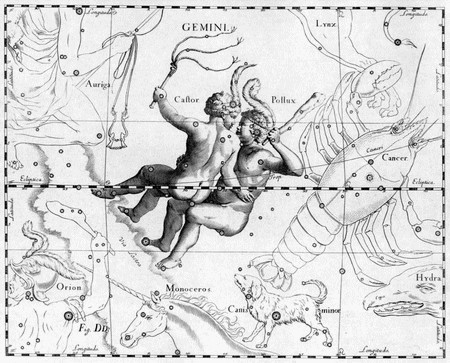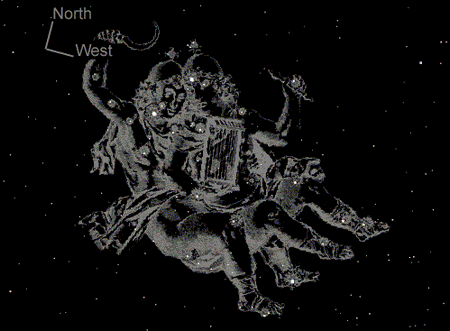3
2009
Who Discovered Gemini
In astrology Gemini people are difficult to pin down. They are very creative and mysterious. The only downside is, what they like today they would end up hating tomorrow.
Clusters of Gemini
Gemini means “twins” in Latin. It is a constellation named after the twins Castor and Pollux in Greek mythology. The constellation is found between Taurus and Cancer. To its north are Lynx and Auriga, to the south Monoceros and Canis Minor. Constellation Gemini has a cluster called Open Cluster M35. Northeast of Gemini is another cluster of nebula called NGC 2371. Gemini’s southern tip has Abell 21, otherwise known as the Medusa Nebula.
Gemini took its name from legendary characters in Greek mythology. Since it is a constellation, no one knows for sure who saw it first. Stars clusters have been up in the sky for the longest time.

The myth behind Gemini
According to popular myth, Castor and Pollux, were known together as the Dioscuri. Their story involved cattle theft. As such, the story was used as a symbol for the Milky Way as a herd of cows. When seen in astronomical maps, Gemini tended to lean away from the Milky Way. At times they are seen with one of the twins within the Milky Way, the other outside. So it appears as though Castor is taking the cattle while Pollux looks on. The story of Gemini is said to have given rise to the myth of the cows of Geryon.
Earliest Observers of Gemini
As early as 6000 years ago the Hindu history book called the Rig Veda already described the stars of Gemini. The Rig Veda called Gemini’s stars as the twin horsemen of the dawn. In ancient India Gemini’s stars were known as Nakula and Sahadeva. These two stars could be clearly seen at dawn in spring. This led to the belief that the twin stars meant the coming of the spring equinox. In ancient India Gemini meant Mithuna, the twins. So the old Western and Eastern meanings were one and the same.

The teachings of ancient India spread westwards to the Far East around 5000 BC. It caught on in Babylon as it did in the rest of the Middle East. Babylonians adopted Indian astronomy to keep track of the seasons for sea travel. Ancient Babylonians called Gemini as Mastabba Galgal, which meant the great twins. But the Babylonains put a spin to it: They came up with their own epic whose heroes were twins Gilgamesh and Enkidu. The great twins fought the gods in search of immortality.
Gemini in ancient Egypt and Greece
Ancient Egypt’s version took the form of twin goats which stood for the two stars told about in the Ramissede Hour Tables. The Ramissede was a book that told time through the position of stars in the night sky. Ancient Egyptians had observed that the two stars of Gemini did rise and follow each other at dawn.
Around 1000 BC, the Greeks picked up on that as well. The Greeks borrowed freely from ancient Babylonian and Egyptian astronomy. Perhaps they were a little more creative in that they embellished the stories behind the constellations with human drama.
When the Romans invaded Greece, the vicious cycle of lifting and borrowing went on. The Romans changed Polydeuces’s name to Pollux. But it came to a point where Gemini took on a single status because either one of the old names went missing for some time.
Gemini to according to sailors
Today, folk sailors still believe Castor and Pollux guide their ships and point their way back. In times of danger, Castor and Pollux send St. Elmo’s fire to signal an oncoming bad luck.

 An article by
An article by 




